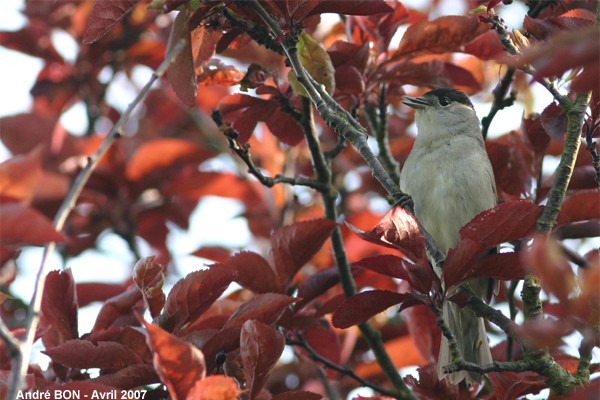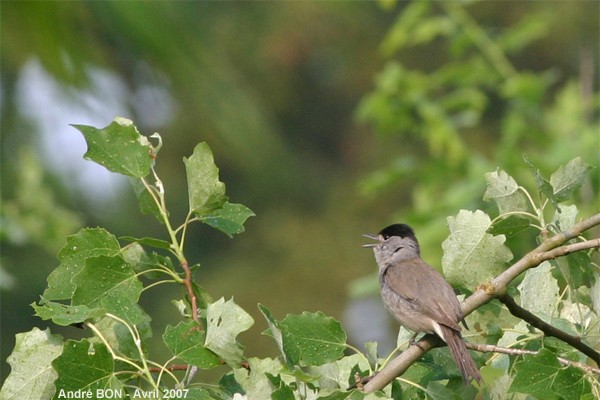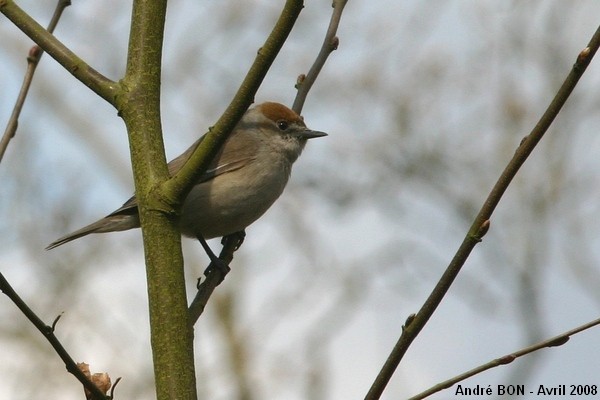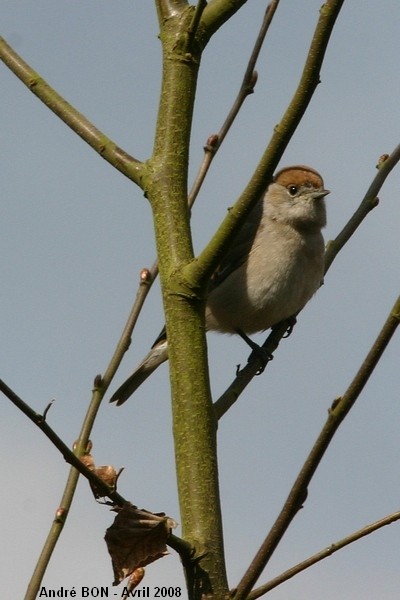





| Blackcap (Sylvia atricapilla (Linnaeus, 1758)) |






|
|
Scientific name: Sylvia atricapilla (Linnaeus, 1758) Common name: Blackcap French name: Fauvette à tête noire Order: Passeriformes Family: Sylviidae Size: Body size : 13 cm; Wingspan : 23 cm; Weight : 15 to 20 g Habitat: Woodlands, bushes, hedgerows, parks and gardens. Food: Insects (mainly flies and caterpillars), some fruits and berries in Autumn. Nesting: Females are used to building the nest with grass in a low shrub. There are two broods per year, of 3 to 6 eggs, since late April or early May. Migration: Blackcaps are partially migrating. Only birds from Northern and Central Europe move to Southern Europe or North Africa in winter. Geographic area: Europe to Central Asia, North Africa. |
The Blackcap is grey coloured bird characterized by a black cap on males and a reddish-brown cap on females. Juveniles are similar to females but with a duller coloured cap. The song is pleasant with clear notes. |
| [To know more about the Blackcap] [Next picture] [Top] |

|
The Blackcap is number one in the charts among other singing birds in my garden with the Blackbird. |
| [To know more about the Blackcap] [Next picture] [Previous picture] [Top] |

|
Observing Blackcaps is easy to do as soon as they are back from migration. You can mainly see males, females are shyer inside deep vegetation. |
| [To know more about the Blackcap] [Next picture] [Previous picture] [Top] |

|
The Blackcap is used to hiding under the foliage. |
| [To know more about the Blackcap] [Next picture] [Previous picture] [Top] |

|
Males are used to perching high to emit their pleasant song in the forest. |
| [To know more about the Blackcap] [Next picture] [Previous picture] [Top] |

|
At least one female showing up for the picture. |
| [To know more about the Blackcap] [Previous picture] [Top] |

|
You can recognize the female Blackcap with its reddish-brown cap. |